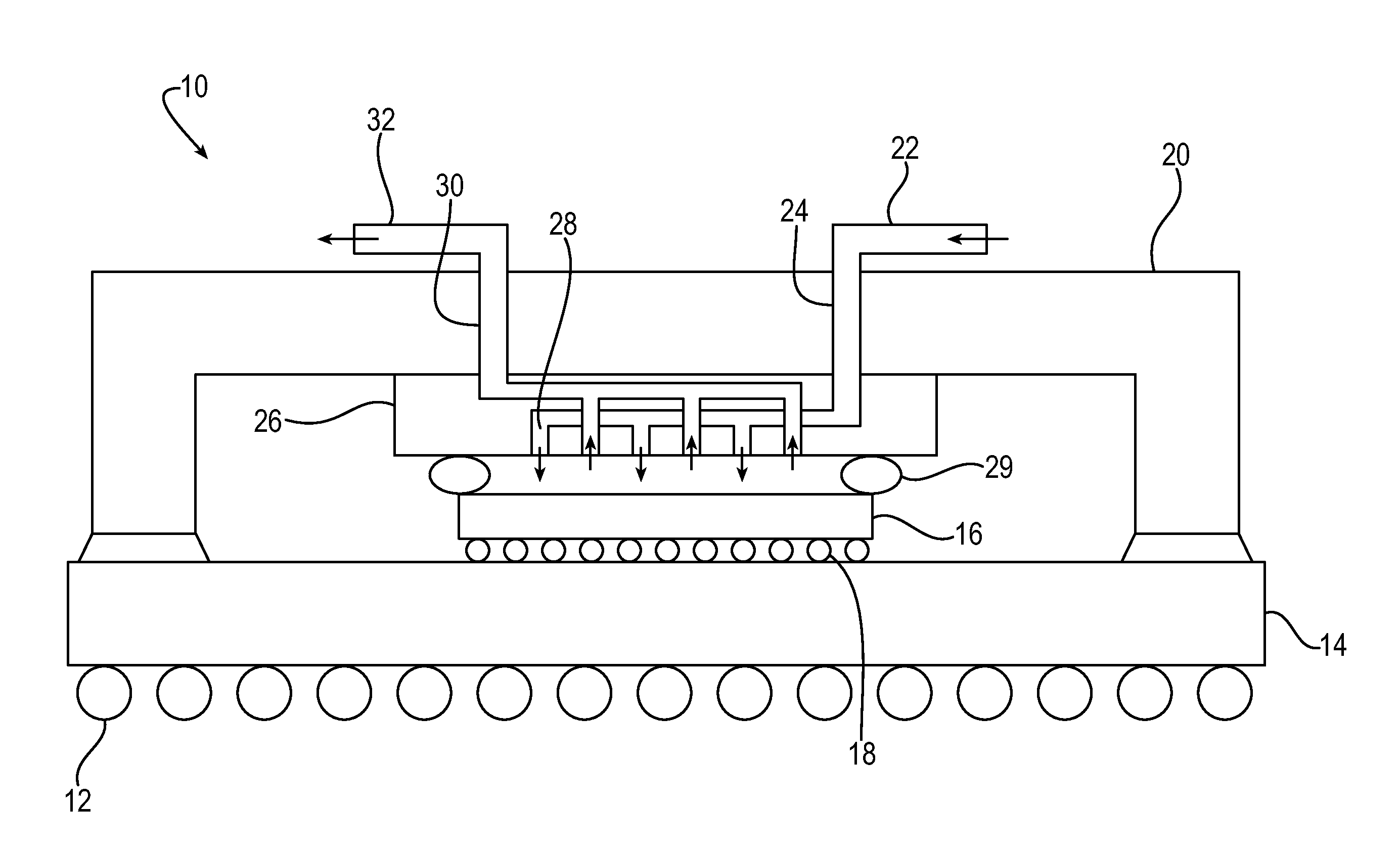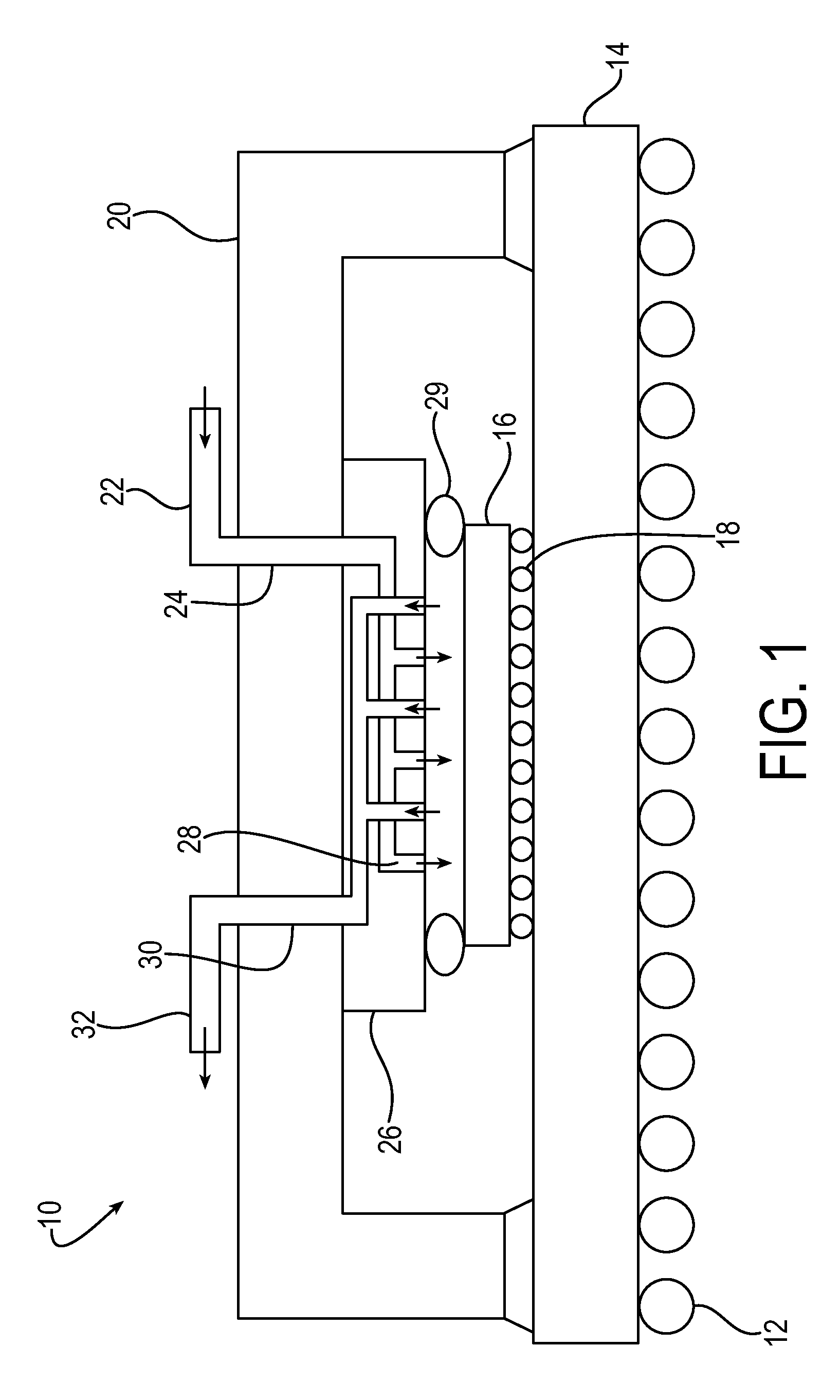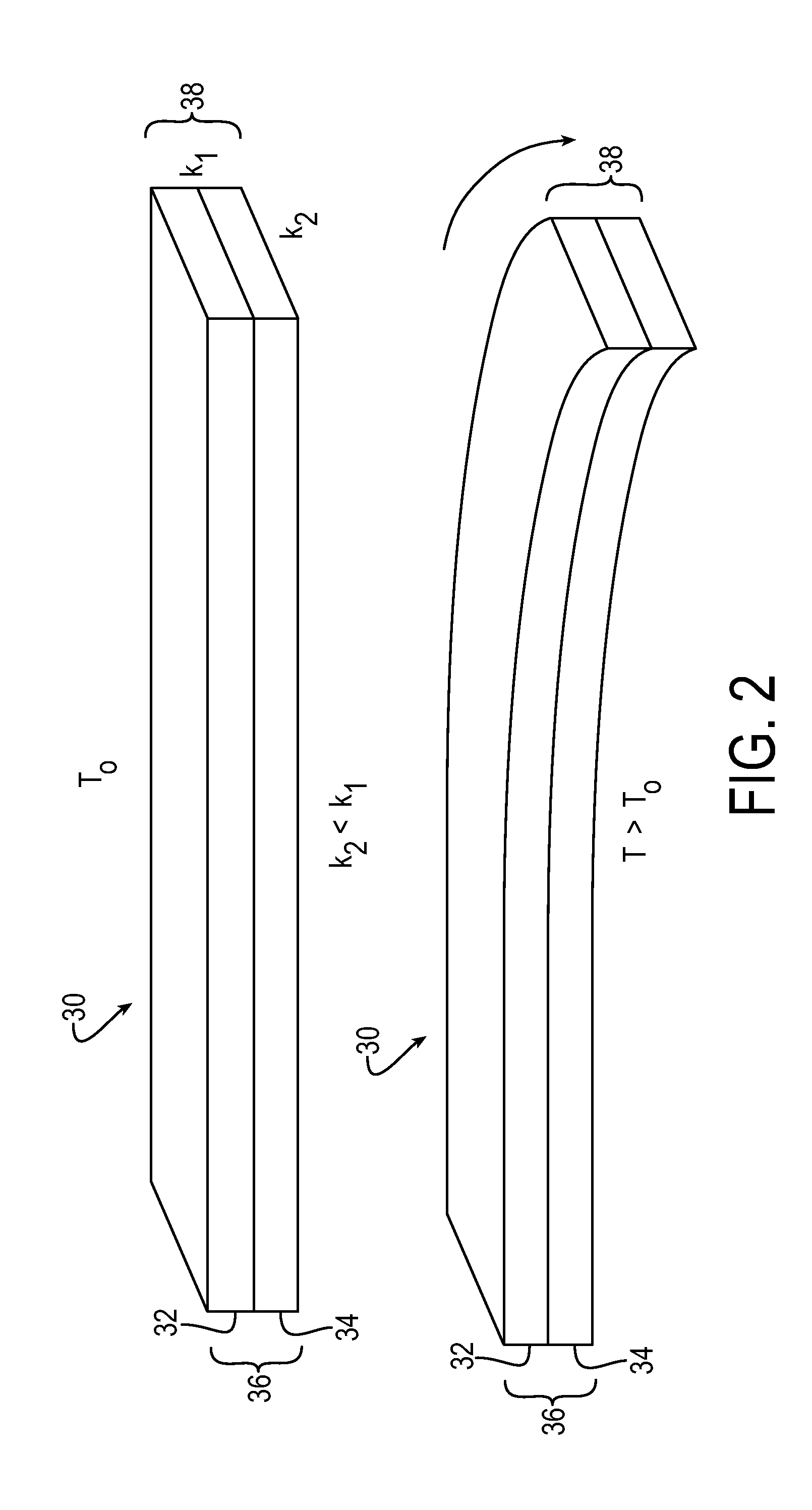Passively controlled smart microjet cooling array
- Summary
- Abstract
- Description
- Claims
- Application Information
AI Technical Summary
Benefits of technology
Problems solved by technology
Method used
Image
Examples
Embodiment Construction
[0031]Embodiments of the present invention will now be described with reference to the drawings, wherein like reference numerals are used to refer to like elements throughout. It will be understood that the figures are not necessarily to scale.
[0032]The passive nature of the described impingement cooling system is based in part on the nature of the thermal expansion of certain materials, which can result in deformation of the material as temperature changes. In exemplary embodiments, two different materials having different thermal expansions are adhered together as a bi-material strip. For example, the bi-material strip may be a bimetallic strip of two different metallic or polymer materials adhered to each other or otherwise fused together. Exemplary bimetallic materials that are known in the art include strips of brass and invar, steel and copper or steel and brass joined together by riveting, brazing or welding. Other thermostatic bimetals products are available commercially, e....
PUM
 Login to View More
Login to View More Abstract
Description
Claims
Application Information
 Login to View More
Login to View More - R&D
- Intellectual Property
- Life Sciences
- Materials
- Tech Scout
- Unparalleled Data Quality
- Higher Quality Content
- 60% Fewer Hallucinations
Browse by: Latest US Patents, China's latest patents, Technical Efficacy Thesaurus, Application Domain, Technology Topic, Popular Technical Reports.
© 2025 PatSnap. All rights reserved.Legal|Privacy policy|Modern Slavery Act Transparency Statement|Sitemap|About US| Contact US: help@patsnap.com



